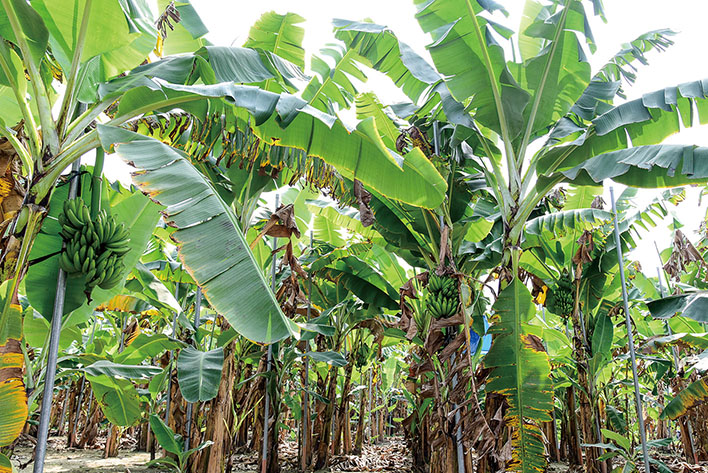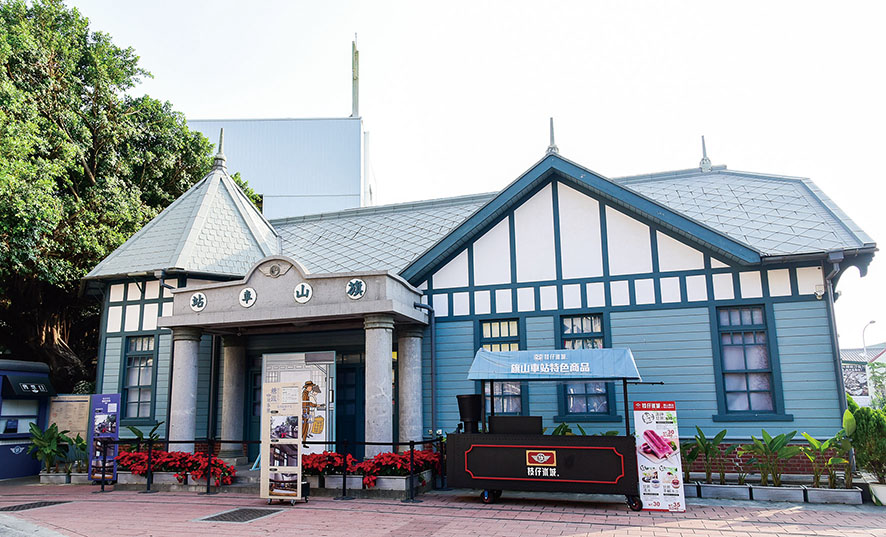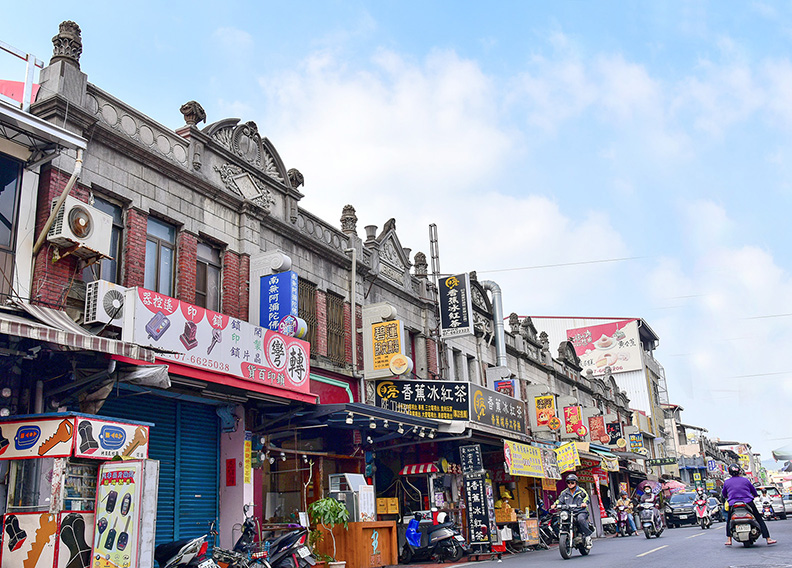Captivating Cishan District
◎English translation: Hou Ya-ting
◎Photos courtesy of CHSG Studio
Cishan District has been known as Kaohsiung's banana region since Japanese colonial times. It maintains the prestigious title of “Taiwan's Banana Kingdom” and is the largest banana producer in the country. In the past, the trade also brought local residents substantial affluence. However, these days, sales have decreased, so residents have come up with innovative ways to revive the region's economy. They often host various cultural events and have been augmenting its banana trade with a variety of products. Cishan District has begun to thrive again by making the banana industry more creative and creating authentic regional experiences for visitors to enjoy. Cishan is made up of a number of communities including the Sugar Refinery, Nansheng, Nansin and Dashan.
 During the Cing-dynasty, when Kangsi was Emperor, Cishan District was only inhabited by the indigenous Pingpu Tribe. The Hoklo (today's Taiwanese) and Hakka people then began migrating to the area. At that time, Cishan was a hub for travelers going from Pingtung to Tainan. There were also many legends about the region. One was about a local grandmother who would sell sweet potato soup to travelers, out of a simple tent that she had set up adjacent to one of the Earth God temples. The grandmother became so famous that Cishan earned the nickname, “Sweet Potato Tent”.
During the Cing-dynasty, when Kangsi was Emperor, Cishan District was only inhabited by the indigenous Pingpu Tribe. The Hoklo (today's Taiwanese) and Hakka people then began migrating to the area. At that time, Cishan was a hub for travelers going from Pingtung to Tainan. There were also many legends about the region. One was about a local grandmother who would sell sweet potato soup to travelers, out of a simple tent that she had set up adjacent to one of the Earth God temples. The grandmother became so famous that Cishan earned the nickname, “Sweet Potato Tent”.
At the height of its banana trade, during the 1960s, Cishan's banana fields reached 4,000 hectares. At that time, Japan imported 90% of its bananas from Taiwan, which mostly came from Cishan. It has the perfect make-up for banana farming, with an annual rainfall of 1,500 to 2,000 millimeters and average temperatures between 25 to 30 degrees Celsius. The Nancihsian River provides the source for the region's irrigation system, and the land is rich and fertile because of the Gaoping River's Alluvium deposits. All these factors contribute to Cishan's sweet premium bananas.
Today however, Taiwan's banana industry is facing fierce competition from the Philippines, which has taken over the banana market share in Japan. This has impacted the domestic industry, which has been struggling to overcome excessive banana production. It was also recently devastated by a yellow leaf disease. Therefore, Cishan's banana farmers have had to develop new channels to promote their crops. These days they also host events and welcome groups that come up on field trips.
Cishan Old Street
During the 1960s, the banana industry made up one third of Taiwan's export profits; the banana trade brought local residents substantial affluence, which can be witnessed in the unique architectural design seen on the buildings along Cishan Old Street. The local residents invested their wealth into trendy western-style houses that they built throughout the thriving center of town. The fusion style of architecture is reflected in the shops and traditional family homes that line the Old Street, each exhibiting their own unique crest.
Cishan Old Street is one of its most popular tourist destinations. During the Japanese colonial period it also functioned as Cishan's political center. Visitors can witness where it got the nickname of “Cishan's Stone Arcade” through its history and distinct architecture. Cishan Old Street has an arch-like-arcade-corridor, which was developed when the town center began to thrive.

One of the main attractions worth checking out is the former Cishan Railway Station, which can be found along Cishan Old Street. Construction began on the station in 1913 and was completed in 1915. The railway station's architecture is a fusion of western and Japanese styles, which was trendy at that time. The station's main structure was built with cedar and the windows were framed with cypress. In the1930s, it was an important transportation hub for both cargo and passengers. However, with the decline of the sugar industry in the 1970s, the track began to be used less and was finally dismantled in 1982, making the station subsequently obsolete. In 2005, it was proclaimed as a historical building and with the collaborative efforts of the local residents, it was transformed into the Sugar& Railway Museum. The Sugar& Railway Museum still maintains a steam train that provides tourists with a virtual journey into the past.
There is also a cluster of historical sites in Cishan that are located in surrounding neighborhoods. These include Cishan Tianhou Taoist Temple, Cishan Farmers' Association, Cishan Elementary School and former Gushan Elementary school, which has been transformed into Cishan Cultural Park. Visitors are recommended to explore Gushan Park, which has been constructed along a winding slope. Gushan Park is located opposite to Ciwei Mountain. Hence, when visitors climb to the top of the park's 500 stair slope, they enjoy breath taking panoramic views of the region. Taiwan's largest Confucius Temple and many monuments from the Japanese colonial period are also located in Gushan Park.
Cishan District once faced a youth migration from the quiet suburb to Taiwan's urban areas. Nowadays, however, many of these youths have been returning to rejuvenate Cishan's local culture and values. Local communities and government agencies have been also collaborating, so they can better promote Cishan. Some of these initiatives include agricultural day camps and family tours hosted by the Agricultural Bureau of Kaohsiung City Government. Visitors can also go to a banana plantation in Nansin (one of Cishan's local communities) and pick bananas. They can also participate in programs such as “adopt a banana tree”, learning how to make banana desserts or try a meal with the main ingredient of bananas. Local banana farmers are also generating a little extra revenue by opening their banana plantations to visitors, so they can enjoy an authentic local experience.
Bananas are the pride and joy of Cishan. Local residents have developed new recipes that incorporate the marvelous flavor of banana and sell banana treats for visitors to take home. Founded in 1945, Chang-mei's Banana Shredded Ice, is one of the regions most well-established local brands. It was founded by Ms. Guo Li Chang-mei, who's nicknamed, “Magical Grandma”, by local residents. Along with the traditional banana flavor, Chang-mei's Banana also offer sesame, vanilla and mint favored shredded Ice, which have all been well received by customers. They also offer soft ice cream and ice cream bars.

Another popular local business is Siaoluchih Ice Cream Shop, which along with selling gelato, also operates as a bookstore. Siaoluchih transforms local regional crops into various gelato flavors. It also displays stories about local farmers and legends about the surrounding communities.
Last year, Cishan also began hosting the annual Cishan Marathon. Its beautiful scenery makes up the backdrop of the route, which begins in central Cishan and stretches along Sijhou Main Bridge and the Meinong River. It then passes Ciwei mountain and ends where Nanzihsian River crosses the Cishan Promenade. Runners pass through banana plantations and local residents, shop owners and the Community Development Association gather along the sides of the road to cheer on the participants and hand out local products as they pass by. These include Beijiao Bananas, banana steamed buns, banana agar jelly, banana soup, banana cakes, banana egg rolls and banana ice cream bars. This unique regional gesture is much appreciated by the participants.
Although Cishan does not enjoy the banana sales that it once had, it is still Taiwan's banana kingdom. Its sweet and delicious premium bananas continue to be popular. Come and enjoy everything Cishan has to offer and a multitude of local banana products. Take some time to meet and chat with its hospitable residents. Visitors are always made to feel at home.